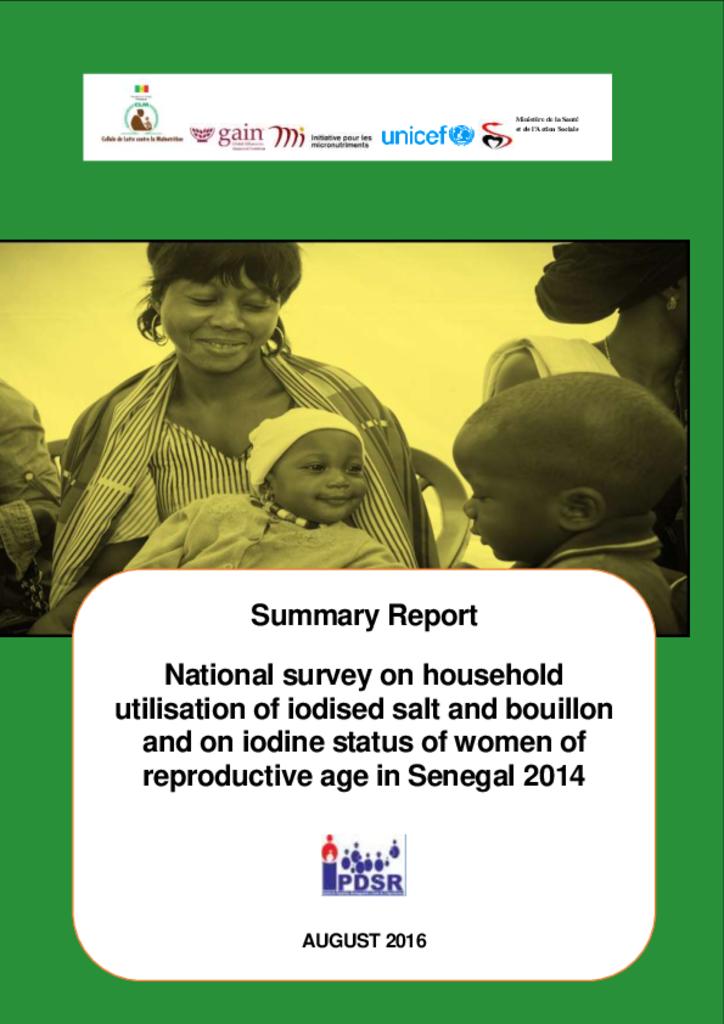In 2014, a national survey on iodine coverage and utilisation was conducted in Senegal to better understand factors associated with access to adequately iodised salt, especially in salt-producing rural areas, and to provide an evidence base from which to plan, monitor and evaluate a revised strategy for achieving optimal iodine nutrition. The specific objectives of the survey were to generate national and strata (urban, salt producing and rural non-salt producing) level estimates for the following indicators:
- Household coverage with adequately iodised salt;
- The proportion of household salt sold in recommended packaging with an iodisation label or logo;
- Knowledge of women of reproductive age (WRA) about iodine deficiency and iodised salt;
- Frequency of consumption of bouillon, as a potential source of iodised salt;
- The median urinary iodine concentration among WRA;
- The median urinary iodine concentration among pregnant women (nationally representative only); and
- Associations between above indicators and each other and with a measure of household deprivation (multidimensional poverty index - MPI) to provide an evidence base for future programming for the achievement of optimal iodine nutrition.
The results showed that there has been little change in national household access to adequately iodised salt (from approximately 50% to 40%) or in population iodine status (deficient) in Senegal since the last national iodine survey in 2010. A higher percentage of urban households were found to be using adequately iodised salt (53.3%), compared to households in the rural salt producing areas (10.9%). Awareness of iodised salt (72.3%) was higher than awareness of iodine deficiency (38.7%) and although both factors were associated with household salt iodine content to some extent, household access to sealed packaged salt was found to be the factor most significantly associated with salt iodine content across all strata.
A comprehensive review of universal salt iodization (USI) and other nutrition policies is needed to improve and sustain iodine status in Senegal. Short-term efforts should be focused on identifying fundamental barriers to low iodised salt coverage in rural areas and improving access to iodised salt for vulnerable populations. There is a need to improve regulatory monitoring capacity and compliance measures to align behavioural incentives with government standards.
